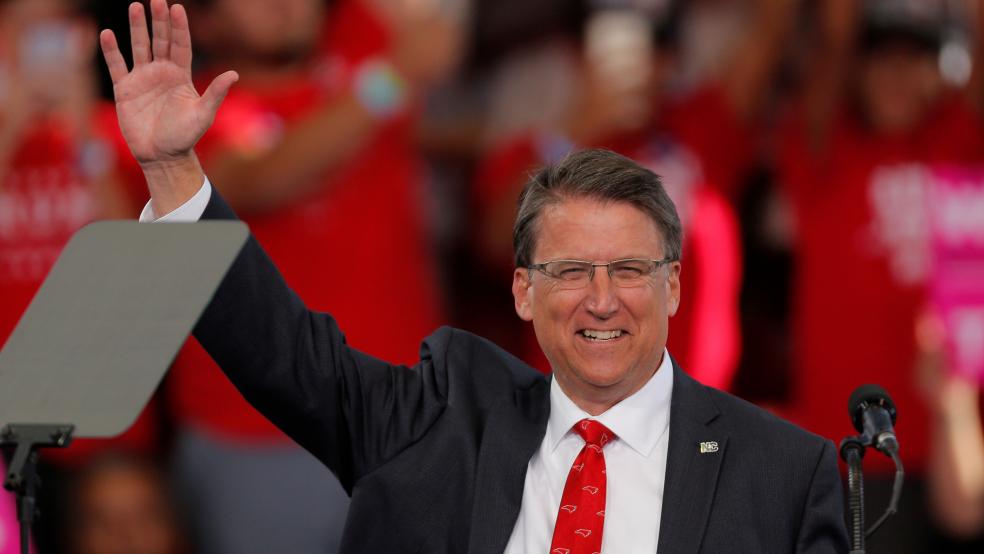Does anybody remember when Donald Trump, fresh from being anointed the presumptive Republican presidential nominee, made the bizarre suggestion last week that the United States should consider defaulting on its debt in order to get its fiscal house in order?
Because he doesn’t.
In an interview with CNN on Monday morning, Trump indignantly said it was “ridiculous” to claim that he ever suggested that the US deal with the national debt by persuading its creditors to accept less than full payment.
Related: Trump Would Risk the ‘Full Faith and Credit’ of the US
“People said I want to go and buy debt and default on debt. I mean, these people are crazy. This is the United States government,” Trump said. “First of all, you never have to default because you print the money, I hate to tell you, okay, so there’s never a default.”
First, Trump can deny it all he likes, but here’s what he said:
“I would borrow, knowing that if the economy crashed, you could make a deal...And if the economy was good, it was good. So, therefore, you can’t lose.”
Given Trump’s history of loading his companies up with debt and then walking away from his creditors, either through the assistance of the bankruptcy courts or by simply refusing to pay what he owed, it’s difficult to read what he was saying any way other than that he believes the U.S. could convince bondholders to accept less than the full amount they are owed.
But today, Trump is spinning a different story. What he now insists he meant was that if interest rates rose, the Treasury could buy debt back at a discount. The idea is that creditors stuck holding low-interest government bonds would be willing to sell their existing holdings at less than face value if they could make up the losses by investing in new debt offering a higher interest rate.
Related: As Trump Turns to the General Election, He Flip Flops on Policy
From a fiscal point of view, however, it would be a meaningless gesture unless the Treasury not only held a huge surplus of cash but also wasn’t actively issuing new debt, neither of which is likely to be the case anytime soon.
If the Treasury had to borrow money to buy back the discounted debt, it would be doing so in an environment of much higher interest rates. Borrowing $75 at 6 percent in order to buy back $100 in discounted debt with a 4 percent interest rate is basically a wash in terms of the interest payments the Treasury would owe.
As the disparity between the rates on older debt and new debt increase, the numbers don’t get better. Even if rates spiked to 8 percent, and bondholders were willing to take a 50 percent haircut on the old debt, the interest payment on the $50 borrowed to buy back the debt would still be about the same as they were on the old debt.
As for Trump’s assertion that there is never a default “because you print the money,” well, that’s true. As long as the federal debt is denominated in U.S. dollars, there is no reason why the U.S. would have to go into default.
Related: Trump Fallout Is Alienating More Conservatives from The GOP
(Of course, in 2011 the federal government came perilously close to default anyway, not because the presses at the Bureau of Printing and Engraving broke down, but because Congress refused to raise the federal debt limit.)
However, printing money in order to service the federal debt would have other consequences -- the devaluing of the currency being one of them, and potentially disastrous inflation being another. So, probably not really a viable option.
The nice thing about being Donald Trump, though, is that today’s wild suggestion has the lifespan of a mayfly. If he’s asked tomorrow about floating the idea that the U.S. can simply print money to deal with its debts, he’ll probably claim it never happened.





